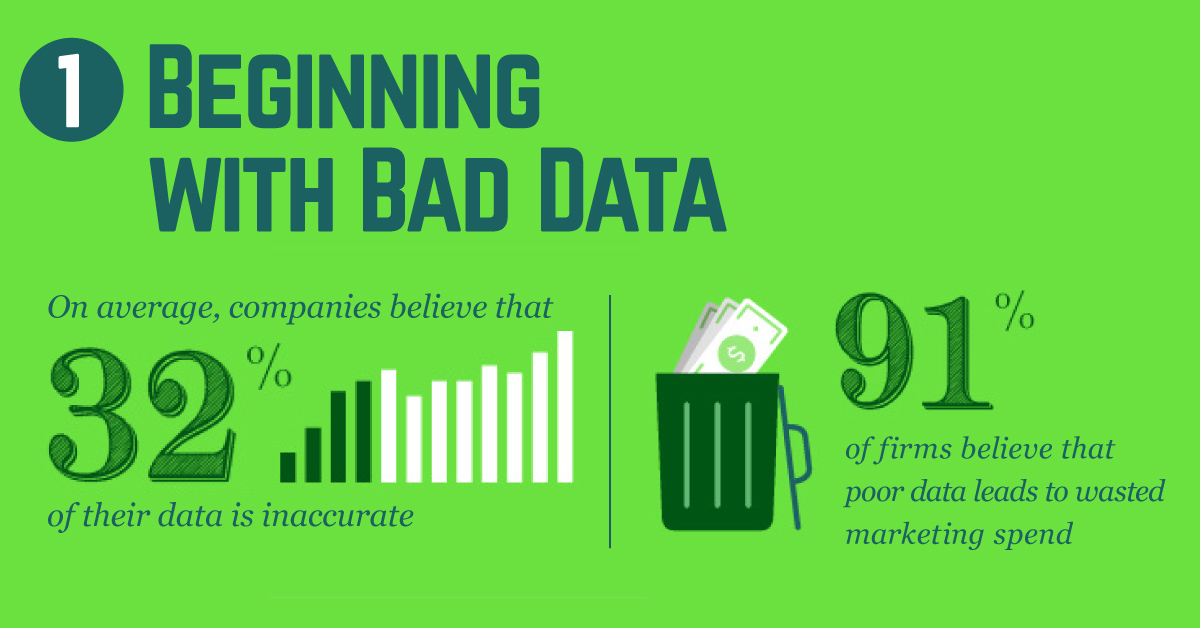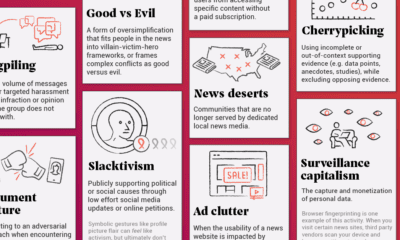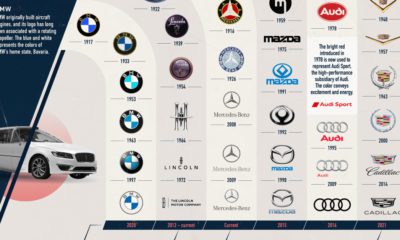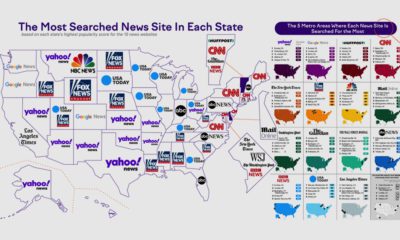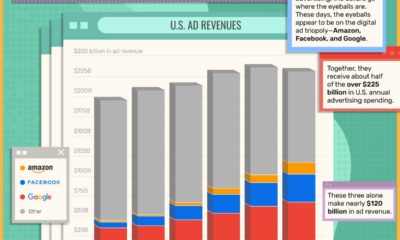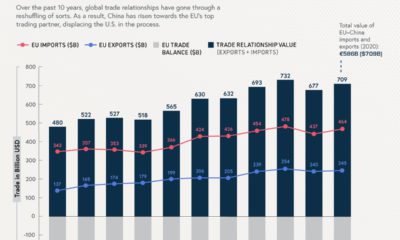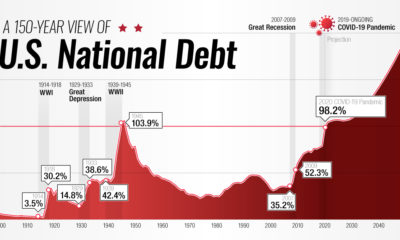As a result, it ultimately ends up being a numbers game: did the marketing team generate sufficient ROI with the restricted amount of money they had? And if you could re-allocate those resources in a particular way, could they have gotten the company more bang for the buck?
The Devil is in the Detail
While maximizing a budget for ROI seems like a straightforward concept, the devil is all in the detail. In the marketing world, ROI is a subjective term – no one agrees what it means, how to measure it, how to develop a strategic plan around it, or what tactics to use. Not surprisingly, it’s within these fuzzy parameters that most marketing decisions and mistakes can be found. Today’s infographic from MDG Advertising dives deep into marketing budgeting, and it outlines some of the most common mistakes that even seasoned marketers make.
Marketing is one of the most fluid business functions, and things are always changing. The emergence of social media and influencer marketing in recent years is a testament to how dynamic the trade is – and it makes maximizing the value of a marketing budget a perennial challenge for entrepreneurs and seasoned execs alike.
Marketing Budget Mistakes to Avoid
With that in mind, here are five common marketing budget mistakes you can avoid.
- Starting with bad data Marketing already relies on hunches and intuition to some extent – so when bad data is driving the rest of the decisions, it’s a recipe for disaster. There are two simultaneous problems here to consider: (1) Data is inaccurate, and (2) Marketers are often measuring the wrong data to begin with. It’s impossible to plan for the future without better understanding the present.
- Failing to loop in Sales Ultimately, the purpose of marketing is to drive sales. Oddly enough, many marketers get wrapped up in the details of their tactics and forget about this key outcome. It’s absolutely essential for marketing to coordinate with other departments, but no department is more important than the sales team. Managers also need to make sure incentives align accordingly.
- Not doubling down on what works This seems obvious, but it’s often missed by marketers for all sorts of reasons, including cognitive biases. Ryan Holiday, the author and media strategist that has worked with people like Tony Robbins and Tim Ferriss, says that not “doubling down” or going “all-in” on a tactic that works is a huge mistake. If something is working, put more money towards that channel until the returns notch down.
- Underestimating the speed of change There’s no doubt that the marketing world changes fast, and becoming complacent can lead to failure. Testing new mediums, channels, and tactics must be done to stay current, and not allocating time and resources to this is one of the biggest marketing budget mistakes made by companies.
- Evaluating efforts too little and too late In the digital world, it’s extremely easy to test new ideas or campaigns through A/B testing and other simple means. Because of this, all ideas should be tested, adjusted, and re-tested at the micro-level on a real-time basis. Infrequent or inadequate testing can lead to missing out on ideas, techniques, and channels that could have proven useful or even essential.
on Even while political regimes across these countries have changed over time, they’ve largely followed a few different types of governance. Today, every country can ultimately be classified into just nine broad forms of government systems. This map by Truman Du uses information from Wikipedia to map the government systems that rule the world today.
Countries By Type of Government
It’s important to note that this map charts government systems according to each country’s legal framework. Many countries have constitutions stating their de jure or legally recognized system of government, but their de facto or realized form of governance may be quite different. Here is a list of the stated government system of UN member states and observers as of January 2023: Let’s take a closer look at some of these systems.
Monarchies
Brought back into the spotlight after the death of Queen Elizabeth II of England in September 2022, this form of government has a single ruler. They carry titles from king and queen to sultan or emperor, and their government systems can be further divided into three modern types: constitutional, semi-constitutional, and absolute. A constitutional monarchy sees the monarch act as head of state within the parameters of a constitution, giving them little to no real power. For example, King Charles III is the head of 15 Commonwealth nations including Canada and Australia. However, each has their own head of government. On the other hand, a semi-constitutional monarchy lets the monarch or ruling royal family retain substantial political powers, as is the case in Jordan and Morocco. However, their monarchs still rule the country according to a democratic constitution and in concert with other institutions. Finally, an absolute monarchy is most like the monarchies of old, where the ruler has full power over governance, with modern examples including Saudi Arabia and Vatican City.
Republics
Unlike monarchies, the people hold the power in a republic government system, directly electing representatives to form government. Again, there are multiple types of modern republic governments: presidential, semi-presidential, and parliamentary. The presidential republic could be considered a direct progression from monarchies. This system has a strong and independent chief executive with extensive powers when it comes to domestic affairs and foreign policy. An example of this is the United States, where the President is both the head of state and the head of government. In a semi-presidential republic, the president is the head of state and has some executive powers that are independent of the legislature. However, the prime minister (or chancellor or equivalent title) is the head of government, responsible to the legislature along with the cabinet. Russia is a classic example of this type of government. The last type of republic system is parliamentary. In this system, the president is a figurehead, while the head of government holds real power and is validated by and accountable to the parliament. This type of system can be seen in Germany, Italy, and India and is akin to constitutional monarchies. It’s also important to point out that some parliamentary republic systems operate slightly differently. For example in South Africa, the president is both the head of state and government, but is elected directly by the legislature. This leaves them (and their ministries) potentially subject to parliamentary confidence.
One-Party State
Many of the systems above involve multiple political parties vying to rule and govern their respective countries. In a one-party state, also called a single-party state or single-party system, only one political party has the right to form government. All other political parties are either outlawed or only allowed limited participation in elections. In this system, a country’s head of state and head of government can be executive or ceremonial but political power is constitutionally linked to a single political movement. China is the most well-known example of this government system, with the General Secretary of the Communist Party of China ruling as the de facto leader since 1989.
Provisional
The final form of government is a provisional government formed as an interim or transitional government. In this system, an emergency governmental body is created to manage political transitions after the collapse of a government, or when a new state is formed. Often these evolve into fully constitutionalized systems, but sometimes they hold power for longer than expected. Some examples of countries that are considered provisional include Libya, Burkina Faso, and Chad.

